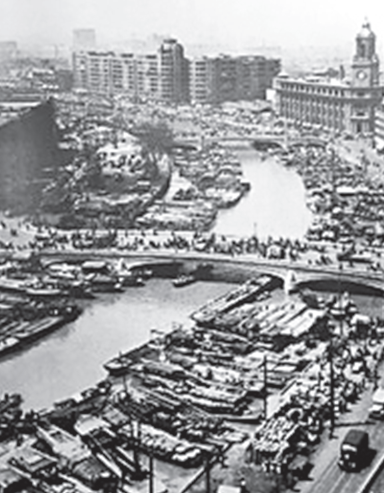 |
|
Parsi photographer Sam Tata's image of 1949 Shanghai. THE BOOK WHERE SOURCING CREDITS HAVE BEEN PROVIDED |
Some Chinese historians have earlier described Shanghai as a "sub-colony" where the British and other Western powers set up concessions as they did in dozens of other Chinese cities.
Chinese museum records say the British East India Company processed opium in India and smuggled it into China when the trade was barred (it was legal for a while in the Qing era). But Western merchants aside, it is believed that some Parsi and other traders from British India were involved in the business that fueled the addiction of millions in China (including in the 18th century).
The book contains many references to the trade. The traders had moved from opium to real estate and returned to cotton by the early 20th century. The Parsi community, which has produced many entrepreneurs in diverse businesses, had private ships that could sail to China and Southeast Asia.
Sikh policemen, who came from an agrarian region in India, were the most visible Indians in Shanghai at the time of the Western concessions, Zhang writes in an essay in the book. Employed by the Shanghai Municipal Council, the settlement's relevant governing body, they frequently appear in images and memories of that period.
The monthly salary of the council's policemen ranged from 16 yuan ($2.33) to 22 yuan, with higher-ups getting 25 yuan. "This was only slightly higher than the average salary of a Chinese worker." The policemen worked eight hours a day at one of the three jobs-patrolling, guarding prisons or controlling traffic. Nationalistic feelings among the Sikhs also began to rise, he adds.